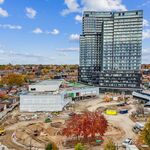Dichotomy
Banned
There's more to jobs than just manufacturing. Part-time jobs at stores and restaurants are needed too, unless 16 year old girls are expected to work full-time in a steel mill or a car plant ("better" jobs). Besides, maybe heavier jobs should over time be sent packing to peripheral spots on the highway...who wants a deafening and odorific printing plant in their backyard?
Will there be a new elementary school? There's jobs. New LRT line into the portlands? More jobs. There's bound to be multiple Starbucks, Second Cups, Subways, Rabbas, and dry cleaners...more work for postmen, for internet repairmen, for home stagers (all those flippable condos)...new lawyers will be needed to help new residents fight The Docks, the power plant, the treatment plant ("how dare they exist in my neighbourhood!")......any population increase means more local jobs.
Well, so far, by your accounting, half the jobs will live off the taxpayers (teachers, TTC, postal workers) or work for $8 an hour (Starbucks), or live off the backs of others (lawyers.) Not a great accounting, in my books.
BTW: I have nothing against lawyers, as long as they are back in their coffins by sun up.




